
Christina Chrysostomou
Wondering how to wash clothes sustainably? These eco-friendly laundry tips will help you achieve that 'green' household status in a short amount of time.
It goes without saying that investing in an energy-saving, smart washing machine is a great move sustainability-wise and that it's worth considering to make our green laundry suggestions even more effective.
Sophie Barrow, co-owner of KINN Living explains, 'As an individual, the fight against climate change can seem hopeless. How much impact can one person have on the planet? But it's important to remember that you're not fighting alone - everyone's efforts have an impact, especially when we all fight together.'
And as well as reducing the environmental impact of your washing, you're highly likely to save money along the way too. By using fewer commercially-made laundry products, and by perhaps even transforming the way you shop for clothes, your bank balance is going to benefit from these really simple changes.
1. Understand your washing symbols
Our first eco-friendly laundry tip is something that you can easily action immediately, without having to purchase any cleaning products or equipment – hurrah! All you need to do is spend some time getting laundry label literate by understanding your washing symbols. By doing so, you can also learn how to wash silk and care for wool – avoiding expensive and chemical-laden trips to the dry cleaners too.
According to research conducted by Oxwash, a typical British adult ruins 14 pieces of clothing, washing £6.8billion down the drain each year in shrunken and damaged garments.
Dr Kyle Grant, former Nasa scientist and founder of the sustainable on-demand wet cleaning firm says: 'Perhaps it’s down to our increasingly busy lives, or even our reliance on ‘fast fashion’ causing us to be less concerned about the condition things emerge from the machine.
Join our newsletter
Get small space home decor ideas, celeb inspiration, DIY tips and more, straight to your inbox!
'Either way, the number of ruined garments needlessly ending up in landfill, combined with the amount of money going down the drain is staggering. It’s easy to see how the symbols can send us into a spin.'
'If you find that the color in your clothes is fading, or your clothes are shrinking in the wash… this is because you’ve washed your clothes at a temperature that’s too high. High-temperature washes are only necessary for heavily soiled clothes or for when a high level of disinfection is needed.'
'Washing on an eco-wash is perfectly fine for the majority of weekly washing, it can even make life easier! Because when you wash at 20° or 30° you don’t need to separate colors, as it won’t be hot enough for the colors to run. This means you can save time, water, and energy. Happy days!'
2. Switch to an eco-friendly laundry detergent

The first and most obvious eco-friendly laundry tip when doing laundry is to switch to a plant-based liquid detergent. Plant-based detergents are just as effective as commercial detergents, but they typically contain fewer ingredients and biodegrade when they reach waterways. Which one should you choose? We've done the hard work for you and rounded up the best eco-friendly washing powders and liquids.
Sophie Barrow explains more, 'Regular washing detergent is not just unhealthy for you and your family, but it is bad for the environment. Standard detergent does not degrade quickly, it often contains optical brighteners (which makes the fabric appear brighter) and phosphates which can be life-threatening for fish.'
Cleaning with vinegar is also a laundry hack that serves many purposes. It can make your lights brighter, whiter and can remove stains naturally.
Tip: Not all 'natural' detergents are palm oil-free, so always check the ingredient list before popping it in your shopping basket.
3. Skip the fabric softener

Many people swear by fabric softener – it makes towels softer and ironing more manageable – but unfortunately, commercial fabric softeners are quite easily the least eco-friendly laundry products out there.
Barrow says, 'Depending on the item (because some things really do not need and should not even have softener, like denim!) we don't recommend that you skip the softener, it helps to prolong the lifespan of a high-quality item, just make sure to use a high-quality softener that isn't full of animal fats. Think of softener like a hand cream on your skin, it creates a healthy barrier.'
Grant adds: 'When you use fabric softener, it leaves behind a coating that makes clothing less absorbent - and in the grand scheme of things, this might seem like a small sacrifice for fragrant and soft clothes - but when you look closer you will realize you’re making certain garments less effective!'
'You should avoid using fabric softener when you’re washing towels, gym wear, and underwear because these fabrics are designed to absorb moisture from the skin to the outside of the garment, where it can then evaporate. But, if the garment is covered in a waxy coating, produced from the fabric softener, sweat remains trapped in the clothing and can create a smell that lasts longer… and no one wants that!'
Many contain palm oil and a whole host of additives, including fillers, that are not biodegradable and that can even be harmful to your health.
The easiest way to cut out fabric softener without your clothes coming out of the wash feeling 'hard', is to use a liquid detergent rather than a powder. Liquid detergents will always be more emollient than powder and are better suited for use in hard water areas.
4. Use less product
Whether you choose an eco-friendly cleaning product or not, running down your supplies means a trip to the supermarket, or a delivery van dropping off a new bottle at your door. But, think about it, you're not just replacing the bottle if you do the math...
If you drive to the store, this might mean extra fuel costs and money spent on car parking. Get it delivered to your door, and nine times out of ten, you'll be paying a premium not only on the product and have to meet a certain spend criteria to have it brought to your doorstep.
So make things easier for yourself your purse, your clothes, and the planet by using only what you need in order to make your laundry liquid or washing powder stretch that little bit further.
'Using too much detergent can make a wash less effective because the excess soap traps the dirt and pushes it back into your clothing… leading to a build-up of bacteria,' says Grant, explaining this common laundry mistake that people make.
'You’ll be surprised to know that the standard detergent cap is ten times bigger than the amount you need for a standard load! You only need one to two tablespoons per wash. Not only is this better for your bank balance… but it’s also better for the environment too.'
5. Stop machine washing your swimwear for eco-friendly laundry
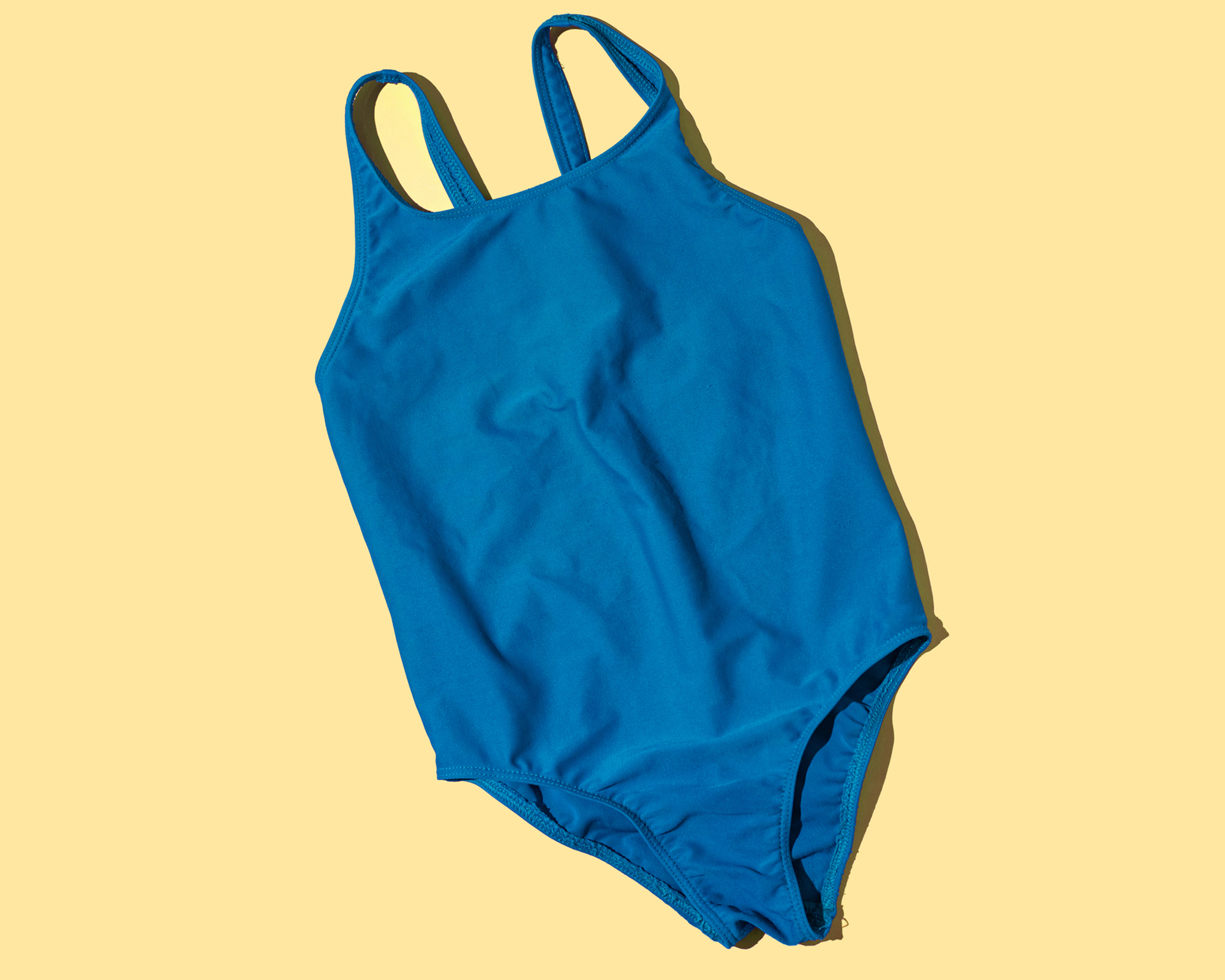
Every time you put your swimming costume or bikini through a washing machine cycle, it sheds microplastics.
Swimwear is made from synthetic fibers that should only ever be washed by hand – and will last longer if washed by hand. Use a mild laundry detergent, or even a shampoo to handwash your bathing suit in your bathroom sink. Or better still, take Barrow's advice:
'I recommend buying laundry bags for delicate items you would put through the machine and also for items made from synthetic fibers as it helps to catch these fibers and stops so many from washing into our waterways.'
Lindsey Davis, editor-in-chief, Ecommerce swears by The Guppyfriend laundry bag to stop small pieces of plastic from getting into our rivers and marine ecosystem.
6. Ditch fast fashion for eco-friendly laundry
There are two main problems with very cheap clothing: one is that it's often made from synthetic materials such as polyester that pollute our waterways and oceans with microplastics (see the above point on swimwear); the other is that very cheap clothing is often poorly made which results in it becoming unwearable after only a few washes.
In this eco-friendly laundry tip, we're not saying that you should never buy clothes again (phew), but, opting for fewer quality items that are made from natural materials is always more sustainable, and likely to be cheaper in the long run.
7. Consider reusing your dryer lint for eco-friendly laundry
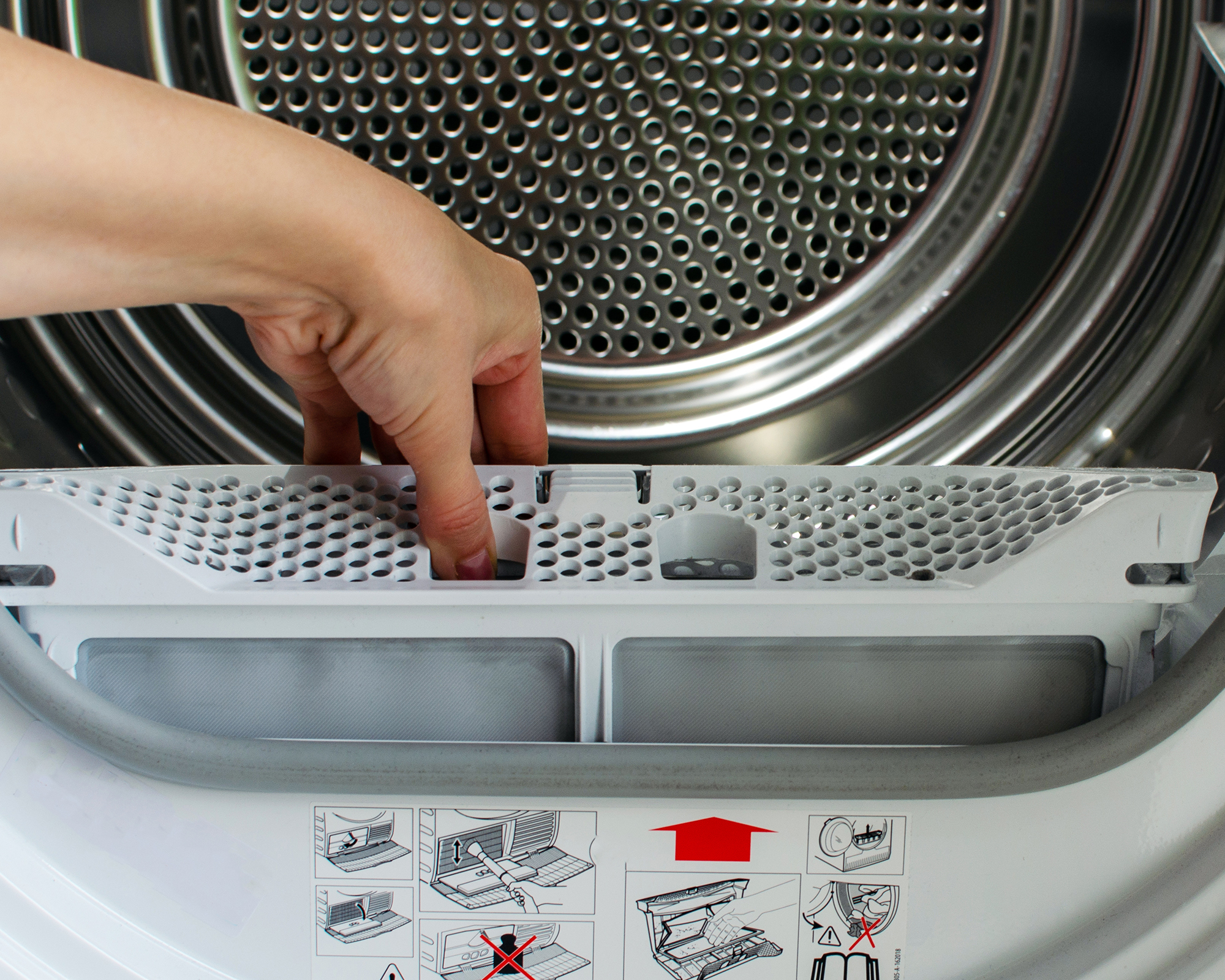
The lint that collects in your dryer filter can be surprisingly useful: got a container garden? Try lining your garden pots with it to increase moisture levels in the soil, or use it to stuff cushions if you're into crafts.
Got a fireplace? Use your lint as kindling to help get the fire going.
8. Refill eco-friendly laundry detergent to reduce your plastic consumption
With conscious consumerism more important than ever, there are a lot of great zero-waste detergent brands to choose from.
Eco-friendly laundry tip number six is: opt to buy laundry detergent without all the packaging from a plastic-free bulk store, make use of the refills most eco-friendly detergent brands offer, or go for a concentrated formula, like this one from Method.
9. Wash a full load of clothes
A busy family schedule means that sometimes our laundry timetables don't work out. While the kids might need school uniforms washed and ironed by Sunday night, that mid-week gym class certainly built up a sweat...And it shows! However tempting it might be to put one or two things in the wash, try where possible to launder items together.
'Although we use a lot less water in the kitchen than the bathroom there are still easy steps you can take to reduce your usage.' explains Adam Chard, Victoria Plum
'If you need to do some laundry, try and limit this to once a week and make sure you fill your machine, no half or light loads! The same goes for the dishwasher, don’t run it until you have a full load of dishes. Doing this will save on electricity as well as water!'
10. Service your washing machine (at home)
Cleaning your washing machine is one of the best things you can do to keep it performing optimally. When your washer-dryer is working at its best you can be sure that water is flowing smoothly, at the right temperature, and that product is being distributed evenly to clean your clothes.
There are several washing machine cleaners on the market, and although many require you to run an empty, hot cycle, this only needs to be done every 2-3 months. Some come in sachets, others tablets, but whichever you choose, these eco-friendly laundry products will do your appliance a whole lot of good.
Of course, if you want to give your cleaner a manual wipe down, get yourself some microfiber cleaning cloths (we like the E-Cloth Home Cleaning Set) and a silicone bottle brush to make sure your washing machine trays are sparkling.
11. Air dry your clothes, or use an economic drier
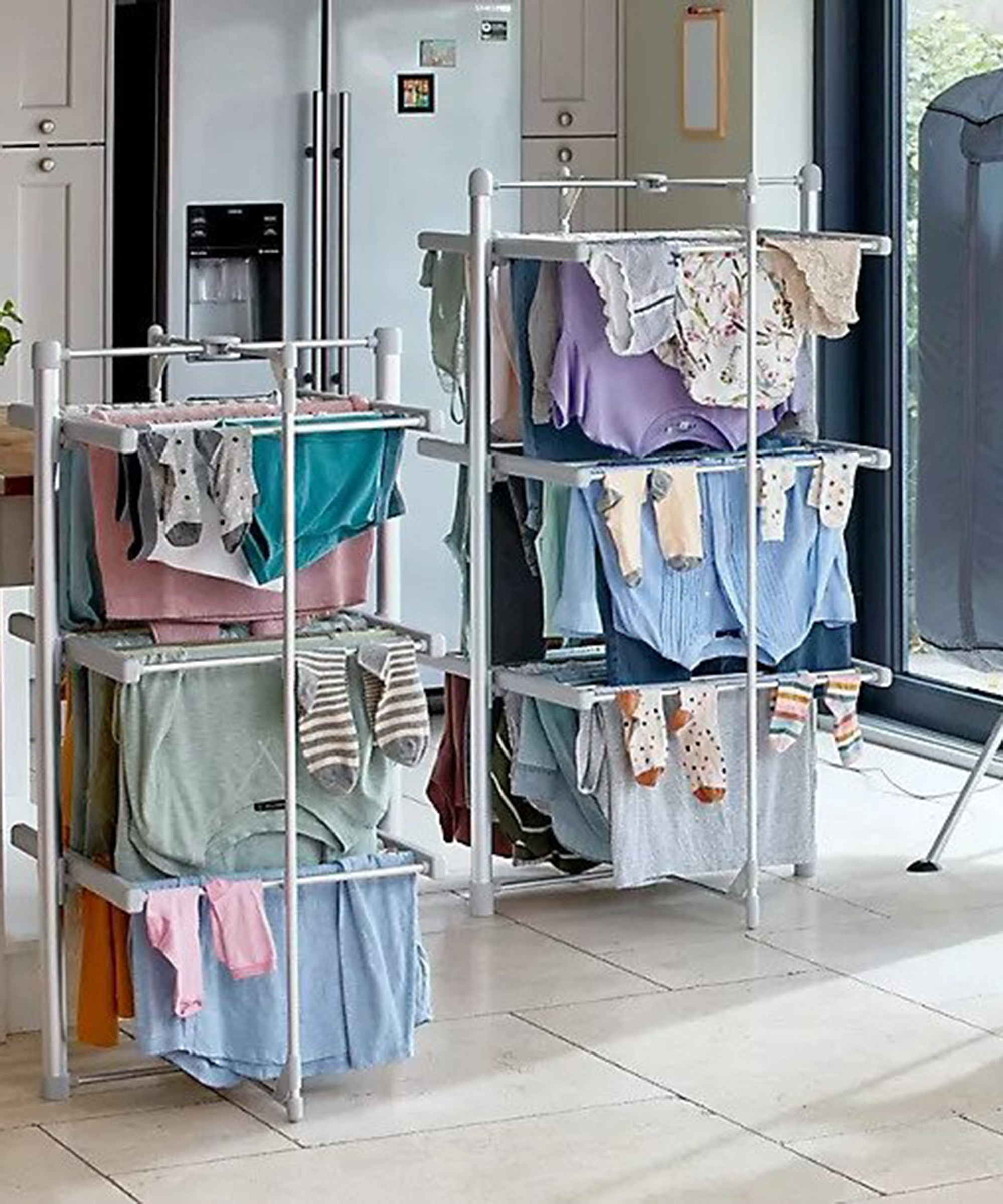
Eco-friendly laundering is one thing, but have you thought about what comes next? Yup – drying clothes on your rad can be a drain on electricity, which means higher energy bills.
So celebrate a clear sky by drying your clothes outside, when the weather permits. If you don't have a washing line, or a garden, investing in a small clothes horse that you can display on your balcony, or in a communal area can save you drying your outfits on the radiator, or in the dryer. By eliminating the spin action of the latter appliance, you're less likely to damage any delicate fibers or embellishments.
Or, if you have space in your house or apartment, something like the Dry:Soon Mini 3-Tier Heated Airer, available at Lakeland costs just pennies to run, and can hold up to 15kg of washing.
12. Buy a new machine
We've kept this one until last, as buying a new washing machine is a luxury not afforded to all. However, if you've got an ancient machine on the brink of breakdown, and your warranty has expired, try and make your purchasing decision with your eco-friendly laundry hat on.
Aside from price, look at the energy ratings and any features which might help save water, electricity, and the environment. On her visit to an industry event, Davis was impressed by the Grundig washing machines which have FiberCatcher technology. This innovation claims to catch up to 90 per cent of microfibers during a synthetic wash cycle.
Alternatively, the LG F4V510WSE comes with AI DD technology to weigh your wash load, review the softness of the fabric, and use this information to select the appropriate program. By being able to care for what you wear, you can make your clothes last longer, without needing to buy new garments each season.
Anna is a professional writer with many years of experience. She has a passion for contemporary home decor and gardening. She covers a range of topics, from practical advice to interior and garden design.
- Christina ChrysostomouFormer acting head ecommerce editor
-
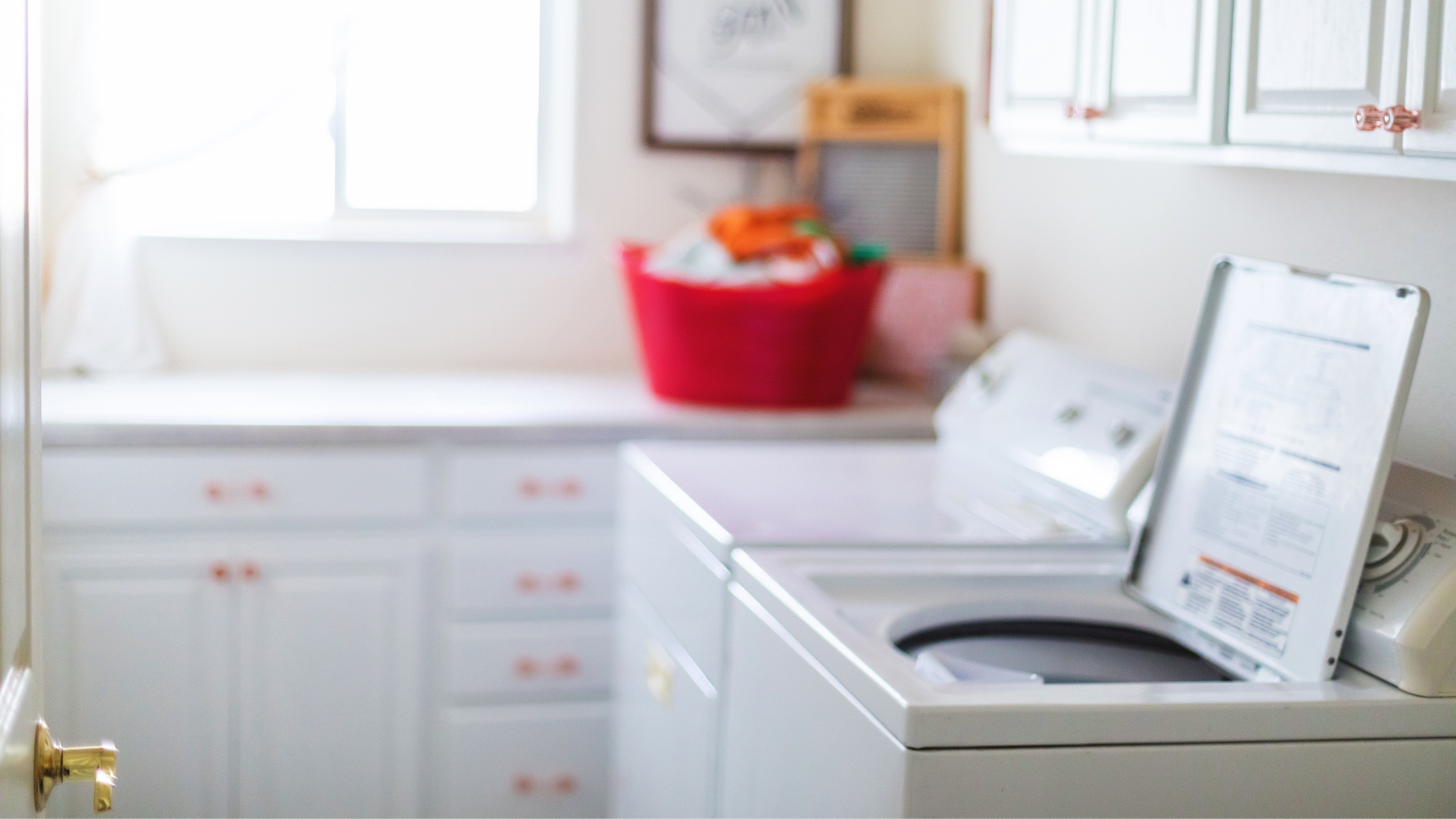 How to clean a top-loading washing machine in four easy steps
How to clean a top-loading washing machine in four easy stepsCleaning The easiest steps and best products to clean a top-loading washing machine
By Punteha van Terheyden Published
-
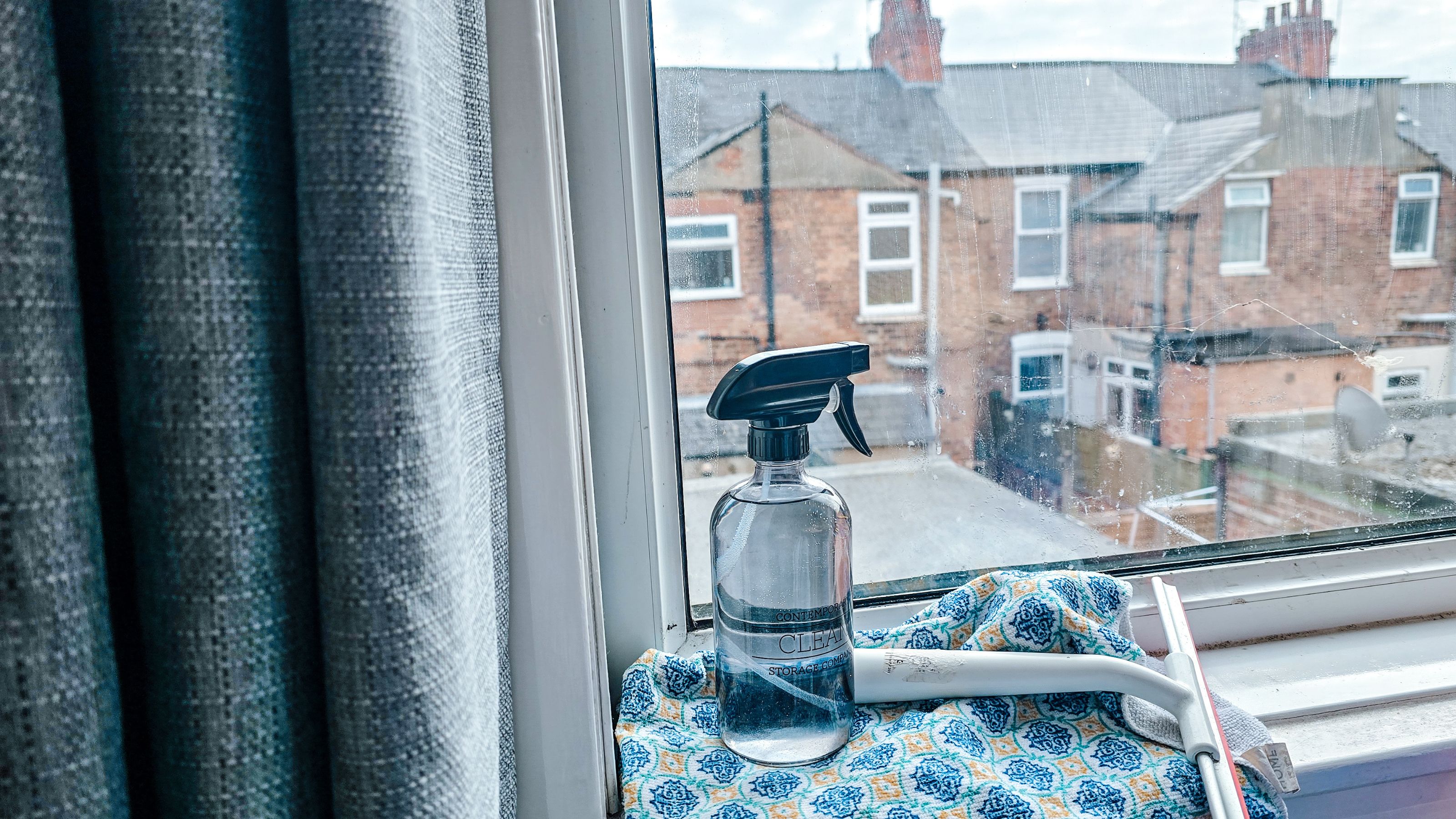 How to clean windows without streaks — 5 easy steps that cleaning pros always follow
How to clean windows without streaks — 5 easy steps that cleaning pros always followThis method on how to clean windows is favored by professional cleaners. We've asked them for the steps you should follow, plus picked cleaning buys
By Eve Smallman Last updated
-
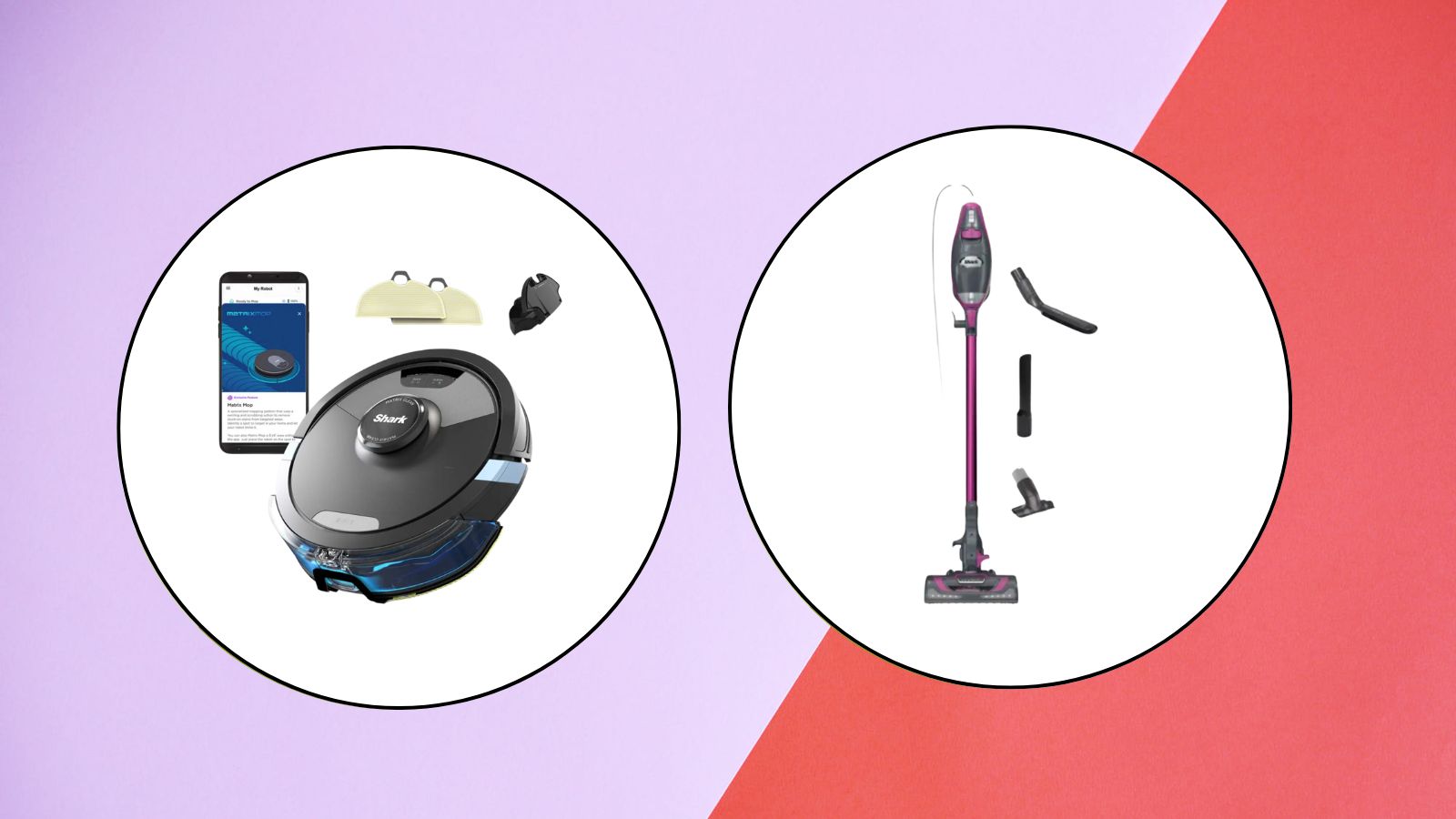 The latest Shark sale deals are perfect for pollen-proofing your home — with up to $150 off our favorite vacuums
The latest Shark sale deals are perfect for pollen-proofing your home — with up to $150 off our favorite vacuumsWe found the latest Shark sale deals on vacuums that are sure to be swooped up, especially as spring blooms trigger pollen allergies and we're in need of extra cleaning
By Danielle Valente Published
-
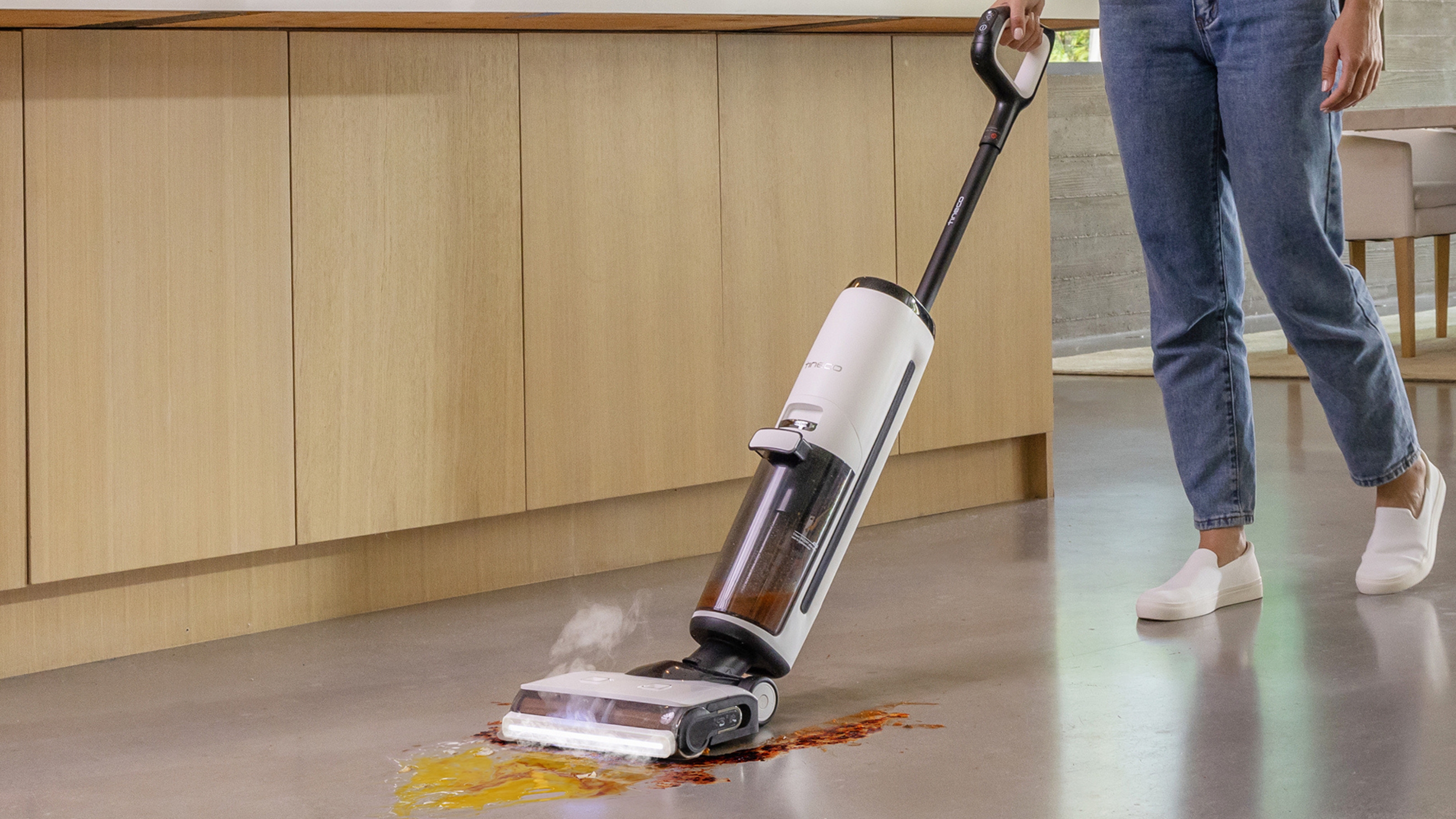
 Tineco Floor One S7 steam wet-dry vacuum review — spotless floors with minimal effort
Tineco Floor One S7 steam wet-dry vacuum review — spotless floors with minimal effortOur contributing editor, Camryn Rabideau, tests the Tineco Floor One S7 steam wet-dry vacuum in her New England homestead property
By Camryn Rabideau Published
-
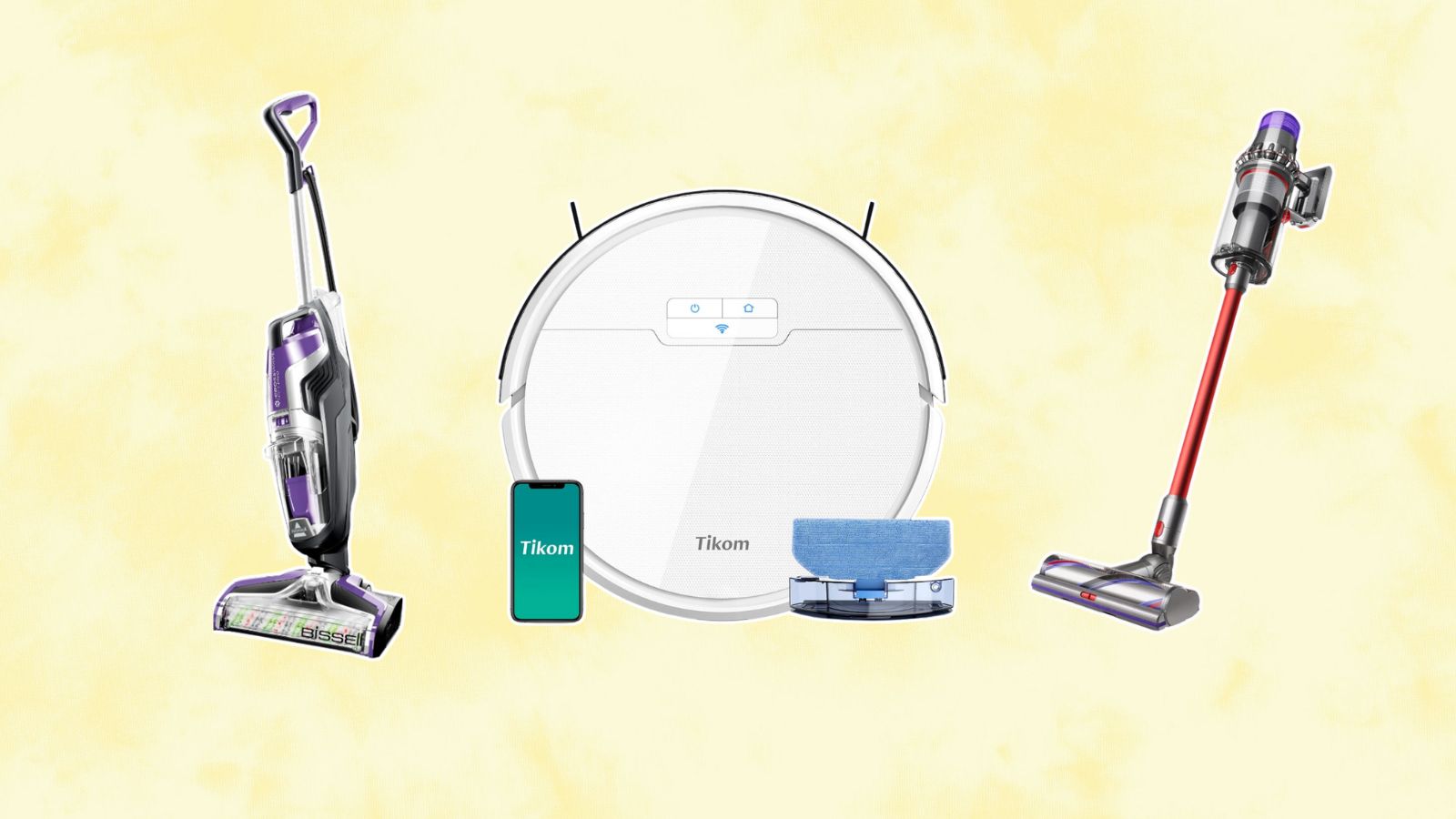 Amazon vacuum cleaners to nab during the retailer's Big Spring Sale — save up to 60% off our go-to small-space finds
Amazon vacuum cleaners to nab during the retailer's Big Spring Sale — save up to 60% off our go-to small-space findsChecking out the savings on Amazon? Vacuum cleaners are a must-buy during their first Big Spring Sale — here are our favorites up to 60% off
By Danielle Valente Published
-
 The Home Edit Walmart cleaning collection has just debuted with finds from $3
The Home Edit Walmart cleaning collection has just debuted with finds from $3Spring cleaning, anyone? The Home Edit Walmart cleaning collection has hit shelves with picks from $3
By Danielle Valente Published
-
 How to clean carpet on stairs — 3 simple steps to a spruced up staircase
How to clean carpet on stairs — 3 simple steps to a spruced up staircaseWant to know how to clean carpet on stairs? Our experts explain the simple steps to a sparkling stairway without too much elbow grease
By Andy van Terheyden Published
-
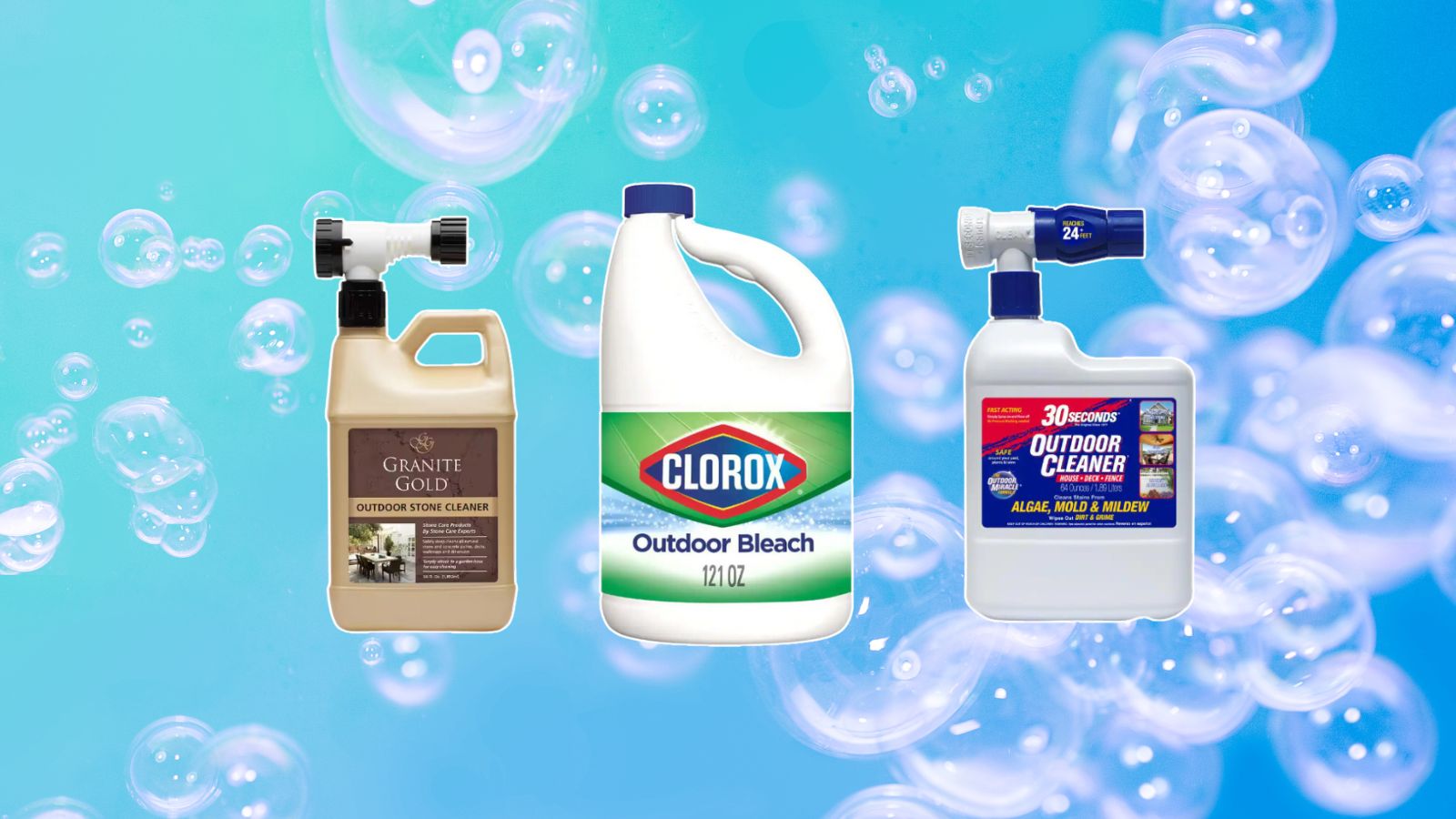 The Home Depot backyard and patio cleaning supplies we're stocking up on before spring
The Home Depot backyard and patio cleaning supplies we're stocking up on before springDon't forget the outdoors when spring cleaning — The Home Depot backyard and patio cleaning buys from $11 will assist with tidying up
By Danielle Valente Published